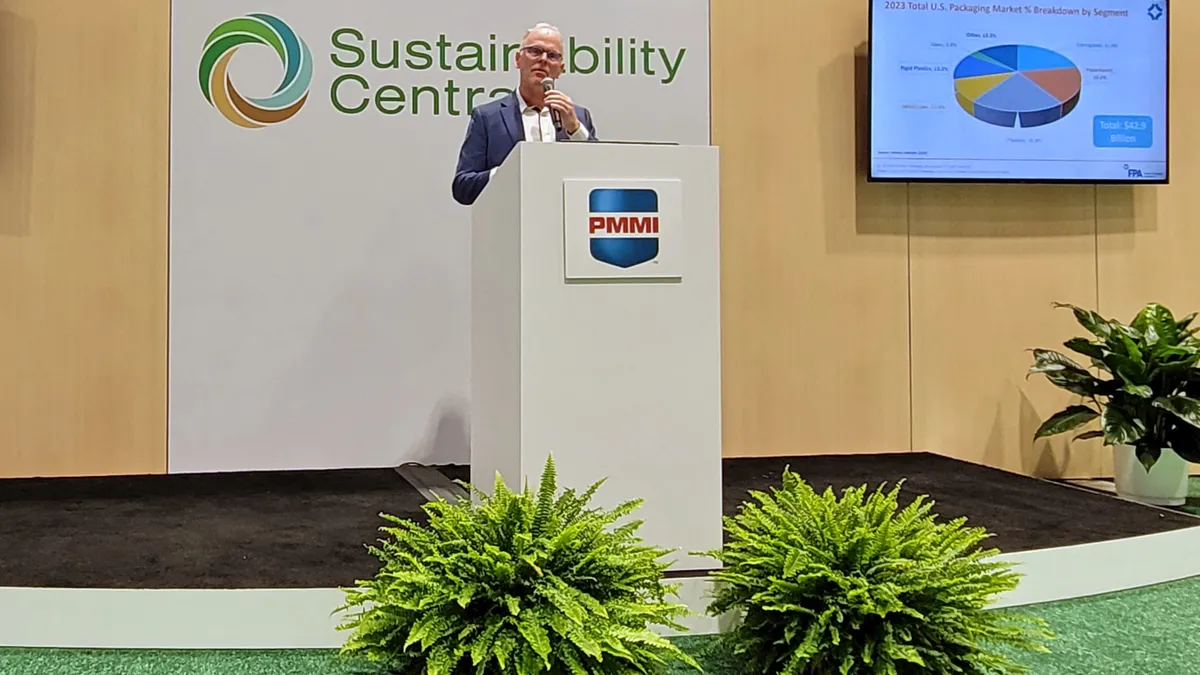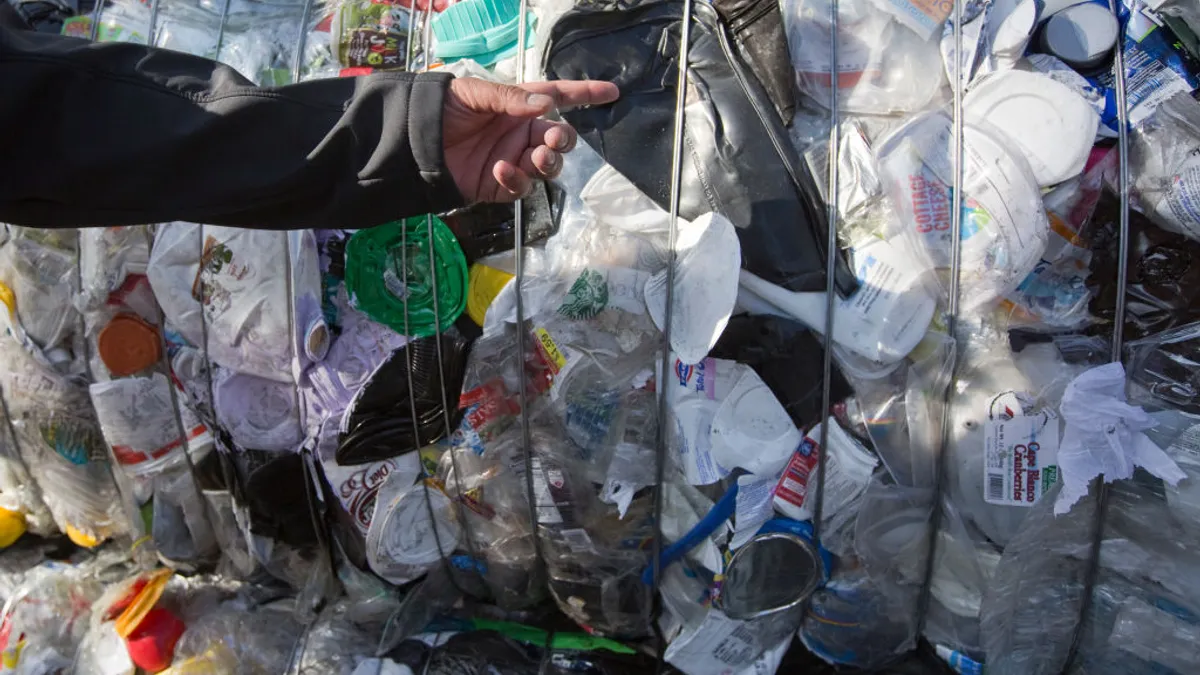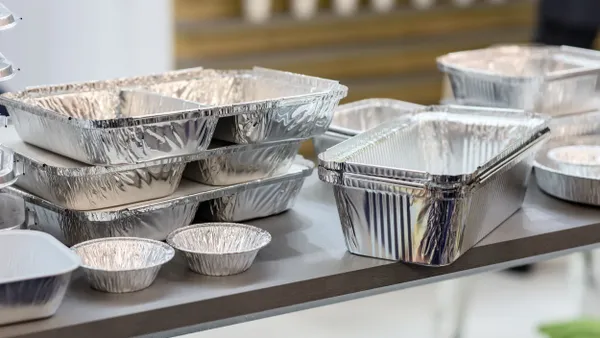The Flexible Packaging Association is ending the year with some change: Dan Felton officially has taken the helm as president and CEO, following the August departure of the group’s former leader, Alison Keane.

Felton is a packaging industry veteran, most recently serving as the executive director at Ameripen for nearly five years. In that role, he advocated for packaging and sustainability issues, and he educated and supported members as state extended producer responsibility for packaging legislation has emerged. Felton joined months after FPA released its strategic plan for the next three years.
Felton officially debuted at FPA the first week of November — the same week he represented the organization at Pack Expo International in Chicago — and now has completed one month at the new job. He described being most excited about transferring his skills and learnings from Ameripen to his work at a larger trade association with more resources. “I get to walk into FPA with some of those same things I've been waiting to have: more staff, more members, more resources to be able to try to affect positive change,” he said.
Felton spoke with Packaging Dive about what he’s learned in his short time with the trade association and what the future holds for flexibles — including potential impacts if President-elect Donald Trump enacts new tariffs.
This interview has been edited for length and clarity.
PACKAGING DIVE: You joined FPA, which serves a niche packaging sector, after being at Ameripen, which reaches broadly across packaging. Which aspects do you anticipate will transfer to your new position and which won’t?
DAN FELTON: The organizations are similar in that a large part of what both do is advocacy work, policy work. The skills in that world will transfer over, as I believe many of the same policy issues we're dealing with at FPA are ones I was dealing with at Ameripen.
For instance, extended producer responsibility, toxics in packaging, recycled content, mandates, labeling. But it's obviously more focused here than at Ameripen.
It’s all materials and brand owners and recyclers at Ameripen. And it is primarily converters of flexible packaging and industry suppliers here at FPA. Sometimes people think flexible packaging is only plastic, but it’s broader than that. It can be paper, it can be metals. Think of aluminum foil and foil coatings, that kind of thing.
One thing that’s a little different which I see already is that the flexible materials and packaging — and admittedly plastics — that FPA members are producing are the ones that are more squarely in the sights of some of the more onerous proposals we're seeing out there: plastic bans, restrictions.
You mentioned EPR, which is a hot topic right now. How do you see FPA giving attention to EPR in 2025 and beyond?
I think they have been engaged quite a bit. FPA was one of the first trade associations to come out in favor of certain types of packaging EPR. They had gone through a process several years ago with the Product Stewardship Institute to seek alignment on some EPR principles for a framework.
But I think where we're pivoting now is, as we look at the states that have passed laws that they are implementing — and additional states getting even more aggressive with EPR proposals — again, materials and formats within my membership that are at risk.
The clock is ticking in California on implementation of SB 54, and there are very real scenarios where some forms of packaging that are within the FPA membership could be banned. So there's a more heightened concern about what can we be doing both on the legislative and regulatory side to ensure that we don't have those scenarios being set up in the future.
That will be something we're definitely going to be spending some more focus on at FPA: trying to hone our arguments and understand, as the regulations are coming out, are we able to get on-ramped, are we able to extend dates? I think everything's on the table at this point to assure that we're not getting into a situation where materials might not be able to be on the market.
Besides the regulatory issues that you just discussed, what are some other focal areas or goals that you have for your first year at FPA?
I think one thing that FPA is very well known for is data and market research: providing that to the members, providing that to the industry. That includes state-of-the-industry reports, the buyer's guide. We're going to continue to provide that.
FPA members are very clear that's very valuable and important to them. I think it's important to recognize one of the reasons that's so important is the industry is continuing to grow. We are very close to approaching a $50 billion industry. And we're very close to corrugated, sitting right underneath corrugated, for the percentage of the market: We're slightly under 21%, and corrugated is slightly over 21%. So there's a scenario, as we continue to grow the industry, that we could have the biggest market share.
And we’re going to be tweaking some of it, too. We've got a lot of great data, but we haven't used it to the extent I think we can for our policy work. When we're going in and meeting with policy makers and administrators and talking about the implications and the impact of doing something that’s proposed, we want to wrap into that the industry impact, too.
As the industry continues to grow, we’re going to continue to be focused on membership development and growth. We have a good, solid membership, but there is more room for growth. We brought on a new supporting member category last year. We're going to be looking at other types of potential membership categories or relationships outside of what we have as the converter members and the supplier members and now the supporting member category.
We definitely have brands who are interested in what FPA is doing. I've heard from multiple brand owners over the last 10 weeks who are anxious to see what FPA is going to be doing and how they can work with our organization. I don't know that we ever will have a formal brand membership category that are voting members, but we're certainly going to be exploring some more solidified relationships with the brand owners, because they are the customers of the FPA members.
You talked about growth, and also about plastic. When you examine brands’ and others’ sustainability efforts underway — such as plastic reduction goals — how does that balance with growth prospects?
I used to say this at Ameripen: Packaging is not going anywhere. And arguably, I don't think plastic packaging is going anywhere, either.
It's what the consumers are demanding. There's real, important attributes for certain types of packaging, including flexible plastic packaging. I think we need to continue to find ways to explore that. I anticipate over the next couple years ramping up our efforts on the value of packaging, and the value of flexible packaging specifically, so when you're looking at sustainability and companies that are doing sustainable packaging, you see where flexible packaging fits into that.
Because there are going to be times when flexible plastic packaging is not only going to be the consumer choice, but also the most logical and environmentally friendly choice. Not all the time; it's going to depend on the format, depend on the product.
Besides people mostly thinking flexibles are plastics, are there other aspects of flexibles that you think are frequently overlooked or misunderstood?
I’ll give you one very specific example: tariffs. I'm learning more about it, and I think we're going to continue to learn more about it with the new administration, with the Trump administration. The flexible packaging industry uses a not insignificant amount of aluminum — either aluminum film directly, or plastic or even paper which are coated with aluminum.
We have had two instances over a little less than a decade or so where there've been tariffs proposed and duties proposed which specifically have targeted aluminum coming into the United States. With flexible packaging, people often aren't thinking about the implications of something like a duty or a tariff on aluminum. So we're going to continue to be focused on that and impressing upon people: Don't just think about flexibles as being plastic, because it's other things, too.
With the president-elect talking a lot about tariffs — not just focused on packaging or aluminum, for that matter — we have deep concerns about what the additional impacts might be on the industry.
One other thing I would mention for both plastics and fiber is the keen interest in making sure it's compostable and has paths forward for recovery, which might be different than curbside recycling. You can argue paper is fairly recyclable, the curbside fiber is. But is it also compostable? If it’s treated in some way, is it compostable? That's something else we are paying attention to that people might not be thinking about with flexible packaging.
Does FPA have a stance on, or initiative for, getting more monomaterial flexibles on the market as opposed to multilayer flexibles?
That's a great question, and it’s a bit of a complicated answer. We're supportive of companies being innovative and exploring moving from multi to mono.
As an example to share with you: Two weeks ago, we had the judges in here for FPA’s annual Flexible Packaging Achievement Awards, which won’t be announced until early March. It was really cool to sit around the table with these packaging experts who were our judges and see them looking at the new monomaterial packaging coming from a company and how that was developed.
But it's not always going to be the most practical solution. There are instances where mono works great, but there are instances where the solution is going to have to be multimaterial in order to meet the barriers that are necessary for the given product.
And then, you take all that and sort of undig it and look at, is it recyclable? Should industry be moving toward monomaterial to ensure that it's more recyclable? In some instances, yes. But even if you look at a monolayer flexible pouch, it’s not likely today in most communities to be recycled at curbside. That’s not to say it can't be or it shouldn't be, but it's not recognized as being recyclable at curbside.
Curbside would be ideal — that's maybe the holy grail for recycling flexible packaging. But absent that anytime soon, we're going to continue to support other ways to ensure that whether it's mono or it's multi, that it has a path forward to be recycled. That could be store dropoffs or depots or whatever.
One other thing: If it’s collected, how is it recycled? That's something I can explore more here at FPA, in terms of is it mechanical versus advanced or molecular, chemical recycling.






















